Do Duc Thuan : « Port On The Red River », 1933, or a little turn and then goes away?
Born in 1898 in Hanoi, on Takou Street, Do Duc Thuan came from a traditional Confucian family.
Little is known about him until 1926, the year of his marriage and his admission to the second class of the Indochina School of Fine Arts, in Hanoi – with Vu Cao Dam and To Ngoc Van, among others – from which he graduated in 1931. That same year, four of his works – three personal, one collective (a canvas, a gouache and ink on silk, a print and lacquered panels) – were shown at the Exposition Coloniale in Paris. In his « Report concerning the participation of the Indochina School of Fine Arts at the international Colonial Exhibition in Paris », Victor Tardieu mentioned them:
- A « silk fabric » (A);
- And « two kakémonos: Jonques sur le Fleuve rouge, wookcut in color » (B);
- By specifying the participation of Le Pho, Le Van Dé and Trang Tran Penh – « lacquer panels » for the « lacquer show » (C).
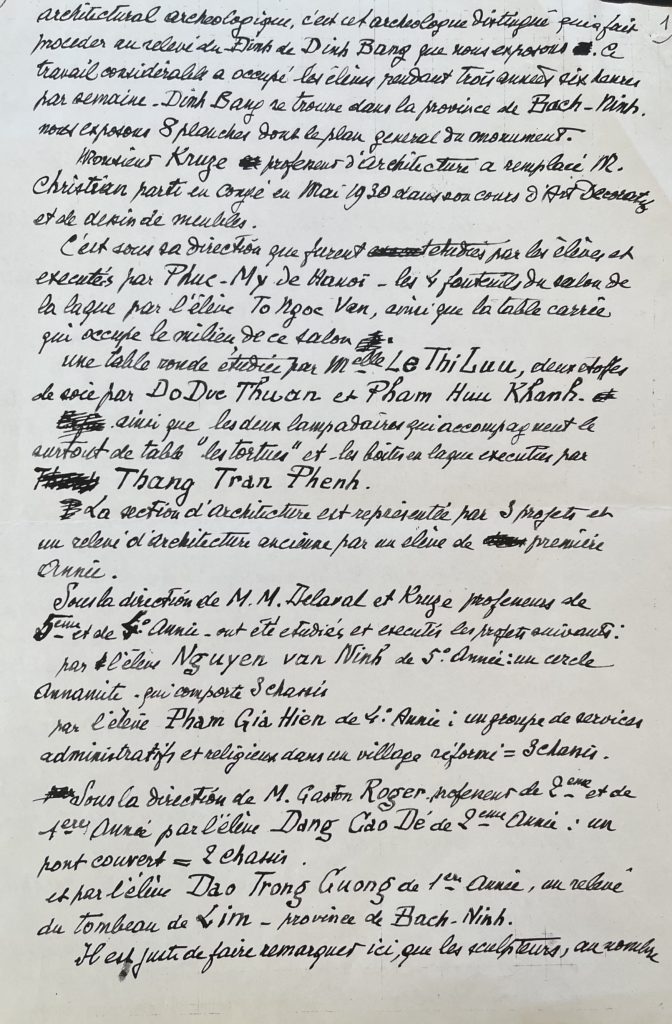
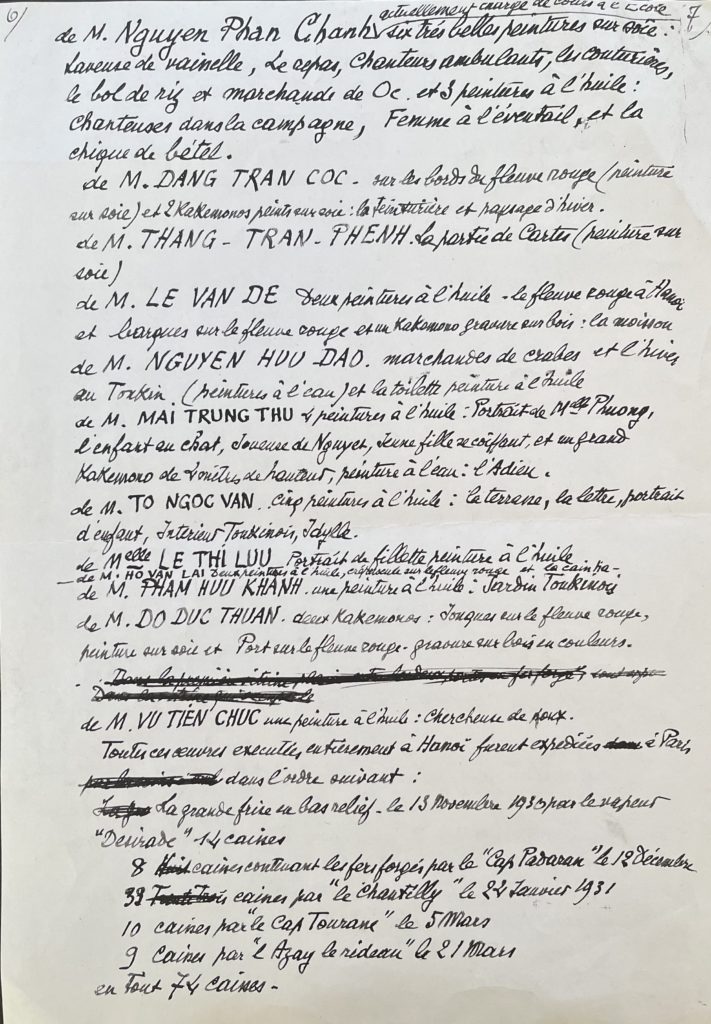
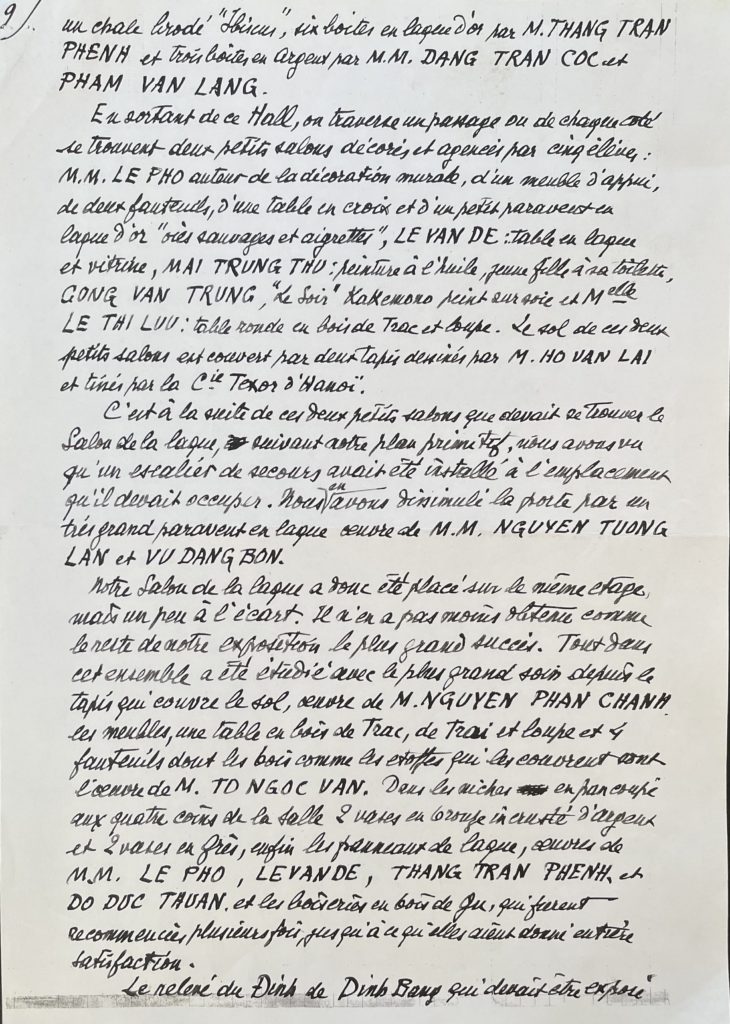
The term « kakemono » used by Tardieu is interesting as it is an indication on the way work was presented during the exhibition. Fixed on a paper roll, itself supported by a thin semi-cylindrical wooden rod at its upper end and fixed on the wall. The roll is weighted with a cylindrical wooden rod of greater diameter at its lower end, which allows its vertical unwinding by the weight.
The two works – the painting and the print – are often confused by name, and this very early. Tardieu titles the two works well, but the print, reproduced (plate IV) in the brochure « Three Schools of Art in Indochina » published by the General Government of Indochina and Hanoi in 1931, is incorrectly titled: the exact title should have been « Port on the Red River » and not « Boats on the Red River ».
In this brochure Do Duc Thuan is widely promoted, benefiting from one of the 9 full-page illustration plates. In addition to Do Duc Thuan’s work, a collective frieze, a work by Nam Son, two works by Le Pho (a lacquer and an oil on canvas), a sculpture by Vu Cao Dam, two wrought-iron grills by the Luu-Dinh-Khai / Vu-Tiên-Chuc tandem, a sculpted fireplace by Georges Khan and an architectural drawing by Tran-Quang-Tran (the future Ngym) are illustrated, plate after plate, in fact 8 artist expressing the diversity of the School’s creations. We note the ambiguous presence of Nam Son a « monitor » of the School but not a student.

Typographical errors, inverted photos, truncated captions, unfortunate additions, unsolicited corrections… Errors, minimal, common, which are the source, in art history, of recurrent controversies (less than in diplomacy, fortunately…) How many contestations for badly retranscribed dimensions, badly reproduced colours. Here, in an official document, it is the title of the work itself that is wrong.
Almost a sign for the career of Do Duc Thuan.
It should be noted that Do Duc Thuan was in his « 3rd year » of teaching. Another error because in 1931, he obtained his diploma, validating his 5 years of teaching.
Finally, he was one of the 8 artists selected (and 24 works) for the 1932 Colonial Exhibition in Rome.
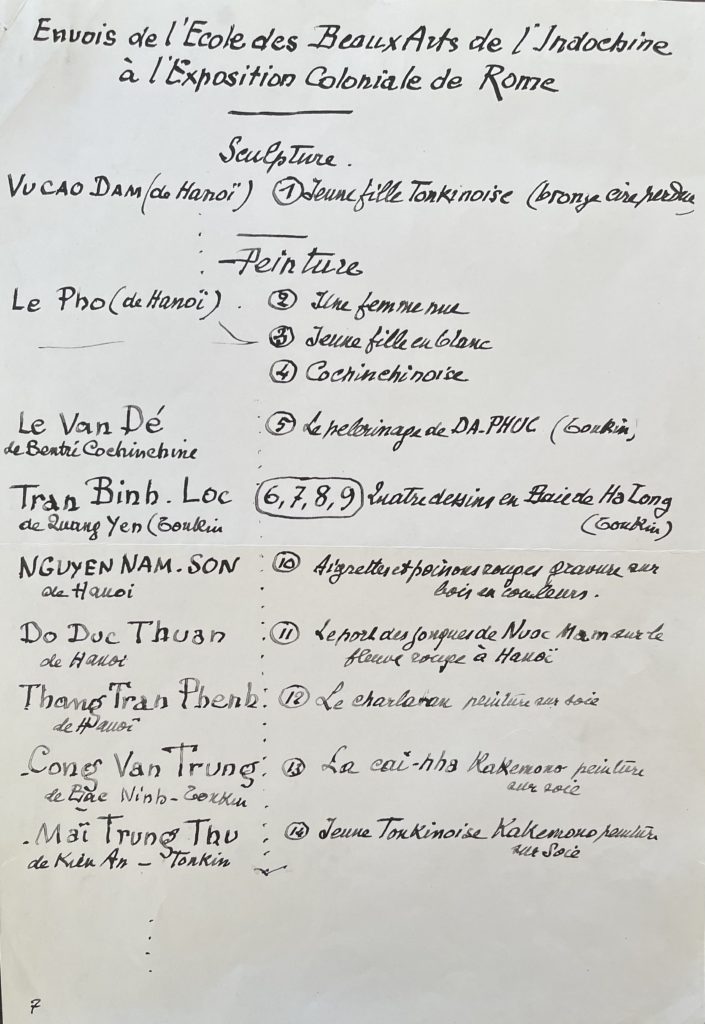
In 1931, Do Duc Thuan was thus a recognised artist and particularly promoted by Victor Tardieu and all the French administrative institutions that assisted him.
Then, and this is a paradox, his artistic career came to a halt. He left the field of painting and printmaking. We find him in Hanoi, on rue Géraud, as the manager of the « Quang Lac » theatre while holding the position of president of an artists’ association. He then opened two carpentry workshops, one on Cotton Street and the other on Buoi Street until 1946 when a bomb explosion killed 20 of his workers and broke his leg.
From then on, he turned to research in traditional oriental medicine, later becoming the president of the « Syndicate of Oriental Pharmacologists of North Vietnam ».
Being an artist is a priesthood, an irrepressible response to a call that only a burning faith can satisfy.
Obviously this was not the case with Do Duc Thuan.
What remains is this beautiful print, which is enough to remain in history.
We have chosen here a 1933 print of the work sent to the Colonial Exhibition. This version (47,5 X 43,5 cm) includes inscriptions, absent from the 1931 edition:
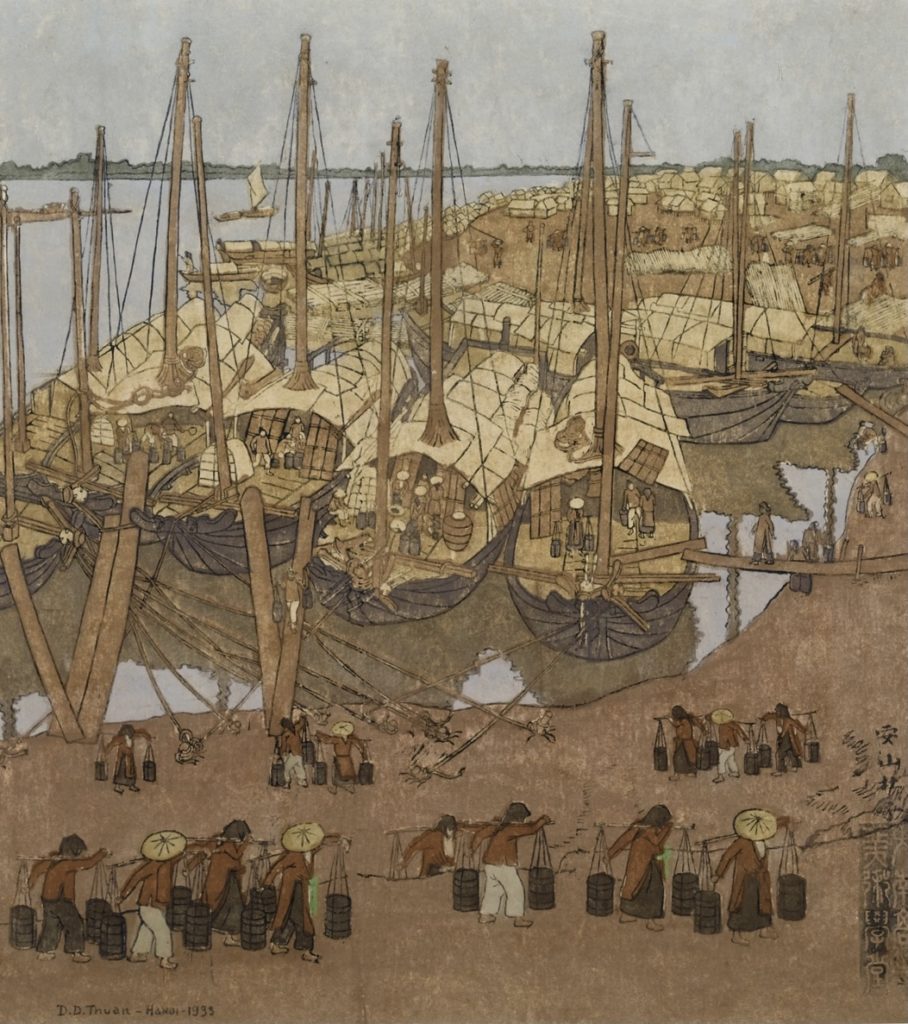
Bottom left, it is signed, (D.D. Thuan) and located (Hanoi) in Roman characters and dated (1933).
At lower right, in Chinese calligraphy, two separate inscriptions:
- The first, vertical, 安山杜子, An shan du zi, « comes from the peaceful mountain », An shan (An son in Vietnamese) being the nickname of our artist:
- The second below the first on the right, 美 ( měi)术 ( shù): Beaux-arts ; 学(xué)堂(táng): study hall translate to : « performed within the School of Fine Arts ».
Here again, the two styles of inscriptions in Romanized letters and Chinese ideograms symbolically carry, not the weight but the charge of the mental upheavals of the moment when identity is being searched somewhere between feeling and display.
The appeal of the work lies in the choice of the cooler tones – in the spirit of those of gouache on silk -, in these anonymous, mechanical characters, in groups in the foreground, in the peaceful junks in the second, while in the third, a junk takes the wind off the immense Red River. The construction of the whole ordered on the blue of the river is refreshing.
A sweet and strong lesson of the inanity of meaning. The ultimate quest. Too ultimate ?
Yes. A print and then goes away.
Jean-François Hubert